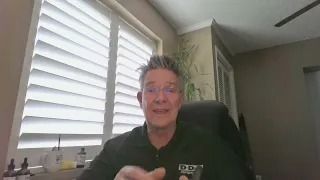U.S. Federal Government Home Equity Conversion Mortgage (HECM), A Line Of Credit With A Reverse Mortgage
November 21, 2022
Ask a Mortgage Question
Use the form below and we will give your our expert answers!
203H Ask A Question
Start Your Loan
with DDA todayYour local Mortgage Broker
Mortgage Broker Largo See our Reviews
Looking for more details? Listen to our extended podcast!
Check out our other helpful videos to learn more about credit and residential mortgages.

Here’s what’s really happening and why consumers are confused: Why “low rates & no closing costs” isn’t true Rates aren’t actually low Headline ads often quote temporary buydowns, ARM teaser rates, or perfect-credit scenarios that very few borrowers qualify for. The real, fully indexed 30-year fixed rate is meaningfully higher once you look at actual pricing. “No closing costs” usually means one of three things Lender credits: The borrower pays through a higher interest rate. Seller concessions: Only possible if the seller agrees — not universal. Costs rolled into the loan: Still paid, just financed over time. Rate buydowns are being marketed as permanent 2-1 or 1-0 buydowns lower payments only for the first year or two. Many borrowers don’t realize their payment will increase later. AI-driven and online lenders amplify the issue Automated platforms advertise best-case pricing without explaining: LLPAs DTI adjustments Credit overlays Property type impacts What customers should be told instead (plain truth) There is always a trade-off between rate and costs. If closing costs are “covered,” the rate will be higher. If the rate is lower, the borrower is paying for it upfront. There is no free money — just different ways to pay. How professionals are reframing the conversation Showing side-by-side scenarios: Low rate / higher costs Higher rate / lender credit Focusing on total cost over time, not just the rate Explaining break-even points clearly Given your background in mortgages and rate behavior, this kind of misrepresentation usually shows up late in the process, when the borrower sees the LE and feels misled. If you want, I can help you: tune in and learn https://www.ddamortgage.com/blog didier malagies nmls#212566 dda mortgage nmls#324329

If the **Federal Reserve cuts interest rates by 0.25% and simultaneously restarts a form of quantitative easing (QE) by buying about $40 billion per month of securities, the overall monetary policy stance becomes very accommodative. Here’s what that generally means for interest rates and the broader economy: 📉 1. Short-Term Interest Rates The Fed’s benchmark rate (federal funds rate) directly sets the cost of overnight borrowing between banks. A 0.25% cut lowers that rate, which usually leads to lower short-term borrowing costs throughout the economy — for example on credit cards, variable-rate loans, and some business financing. Yahoo Finance +1 In most markets, short-term yields fall first, because they track the federal funds rate most closely. Reuters 📉 2. Long-Term Interest Rates Purchasing bonds (QE) puts downward pressure on long-term yields. When the Fed buys large amounts of Treasury bills or bonds, it increases demand for them, pushing prices up and yields down. SIEPR This tends to lower mortgage rates, corporate borrowing costs, and yields on long-dated government bonds, though not always as quickly or as much as short-term rates. Bankrate 🤝 3. Combined Effect Rate cuts + QE = dual easing. Rate cuts reduce the cost of short-term credit, and QE often helps bring down long-term rates too. Together, they usually flatten the yield curve (short and long rates both lower). SIEPR Lower rates overall tend to stimulate spending by households and investment by businesses because borrowing is cheaper. Cleveland Federal Reserve 💡 4. Market and Economic Responses Financial markets often interpret such easing as a cue that the Fed wants to support the economy. Stocks may rise and bond yields may fall. Reuters However, if inflation is already above target (as it has been), this accommodative stance could keep long-term inflation elevated or slow the pace of inflation decline. That’s one reason why Fed policymakers are sometimes divided over aggressive easing. Reuters 🔁 5. What This Doesn’t Mean The Fed buying $40 billion in bills right now may technically be labeled something like “reserve management purchases,” and some market analysts argue this may not be classic QE. But whether it’s traditional QE or not, the effect on liquidity and longer-term rates is similar: more Fed demand for government paper equals lower yields. Reuters In simple terms: ✅ Short-term rates will be lower because of the rate cut. ✅ Long-term rates are likely to decline too if the asset purchases are sustained. ➡️ Overall borrowing costs fall across the economy, boosting credit, investment, and spending. ⚠️ But this also risks higher inflation if demand strengthens too much while supply remains constrained. tune in and learn https://www.ddamortgage.com/blog didier malagies nmls#212566 dda mortgage nmls#324329



